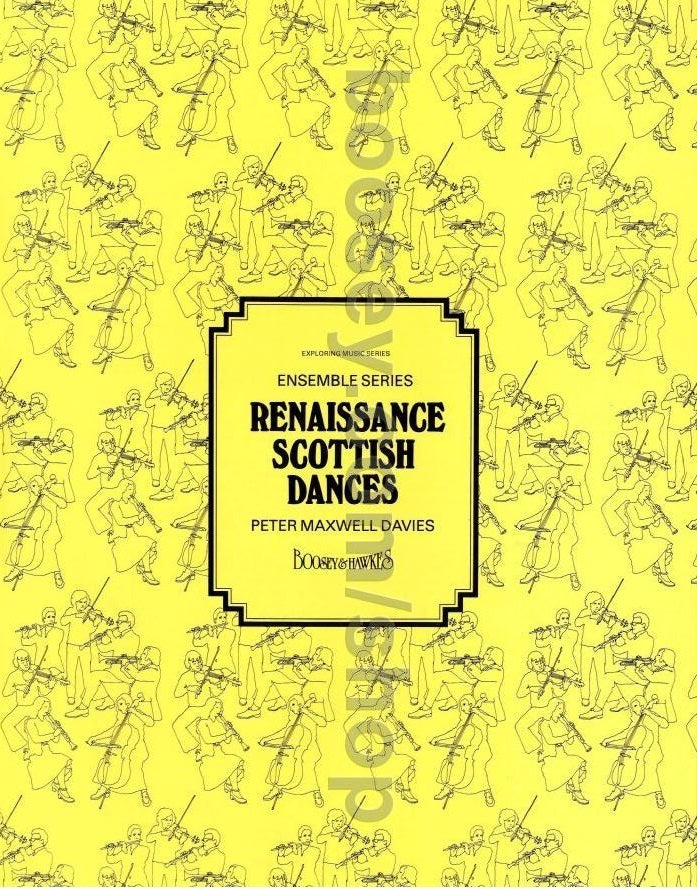Syrinx Music
Maxwell-Davies - Renaissance Scottish Dances
Maxwell-Davies - Renaissance Scottish Dances
Couldn't load pickup availability
for Flute, Clarinet, Guitar, Violin, Cello and Percussion
Score and parts
Peter Maxwell Davies maintains an odd but intimate relationship with history -- in fact, his familiarity with musical styles from various periods and regions makes him a master of allusion and collage. Such familiarity results from his study and realization of early (or earlier) music, as demonstrated in his Renaissance Scottish Dances. First performed by Davies' own Fires of London ensemble at the Dartington Summer School in 1973, the suite is a more or less faithful rendition of seven dances culled from Kenneth Elliot's collection of Scottish music found in the Musica Britannica series. In bringing these pieces back to life, Davies seems less concerned with historical "authenticity" than a kind of intuitive, historical frame of mind; that is, his realizations of the pieces try not so much to speculate about what they would have sounded like originally, but instead attempt to assume the performative feel and project a musical mood similar to those that might have been exchanged in the original performance context. The scoring, for example, calls for flute, clarinet, guitar (casually posing as a lute), violin, cello, and a battery of anachronistic percussion -- including glockenspiel, marimba, tambourine, woodblocks, and a "bunch of keys (or dried peas in a tin)." Davies' prefatory notes in the score also allow for the substitution of any or all of the instruments with any others that might fulfill the same textural purpose: the guitar may be replaced by harpsichord, the flute by an oboe, etc. Occasionally Davies takes some license in the musical materials themselves, with little gestural exaggerations or slightly overpronounced articulations.
The suite begins with an Intrada performed by the flute, guitar, and violin. The melody is altogether simple, with no rhythms more complex than eighth and quarter notes. The guitar provides a steady chordal accompaniment but occasionally punctuates a phrase with a decorative run. Meanwhile the violin imitates bagpipes with pointed grace notes and sustained open fourths and fifths. The Courrant that follows is a bit more demanding of the violin, which executes a few moments of polyphony and some agile grace note leaps. The 6/8 time highlights the flute's lilting melody, which is intermittently sent bouncing by lively Scotch snap rhythmic figures. The short tune is repeated in its entirety, the second time joined by a syncopated and slightly eccentric countermelody offered by the glockenspiel. The third dance, titled "Sweit smylling Katie loves me," is a kind of misaligned duet between a plaintive guitar and a slightly disoriented pizzicato cello; here Davies places himself most unambiguously in the twentieth century. No. 4, "Last time I came over the Mure," otherwise nondescript melodies are made distinct through clever use of glissandi, while driving rhythms of the next dance, "Ane Exempill of Tripla," are maintained alternately by the rattled car keys and the tambourine. In "Remember me my deir," the tutti ensemble moves in slow and thoughtful homophony above the marimba's bass line; the entire group then bubbles through the final "Almayne."
Share


